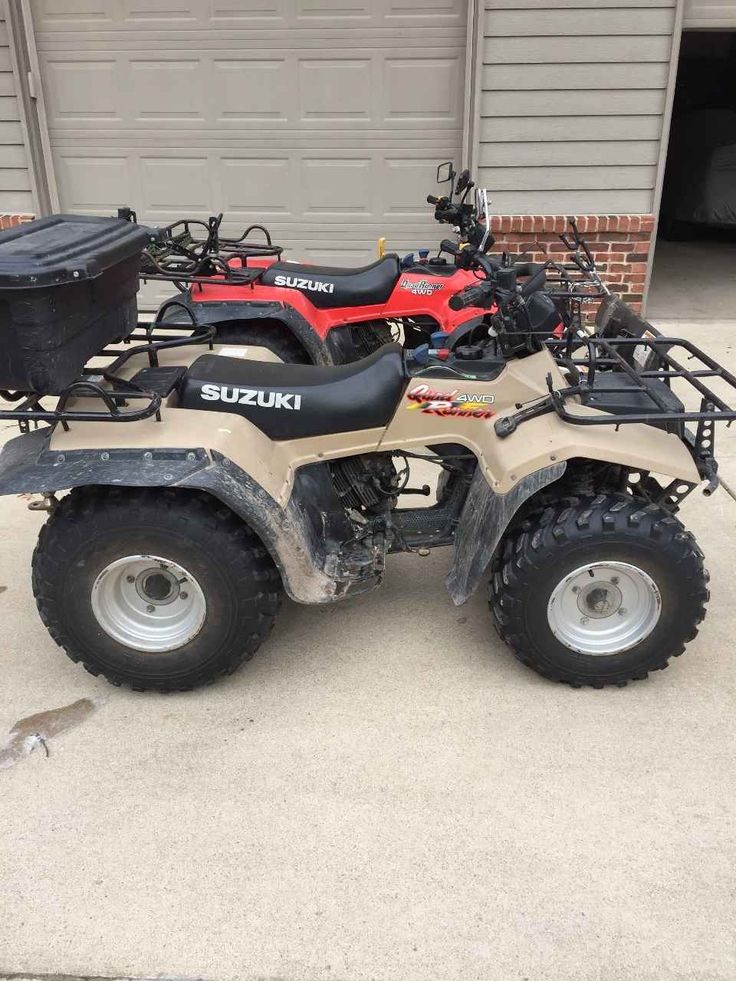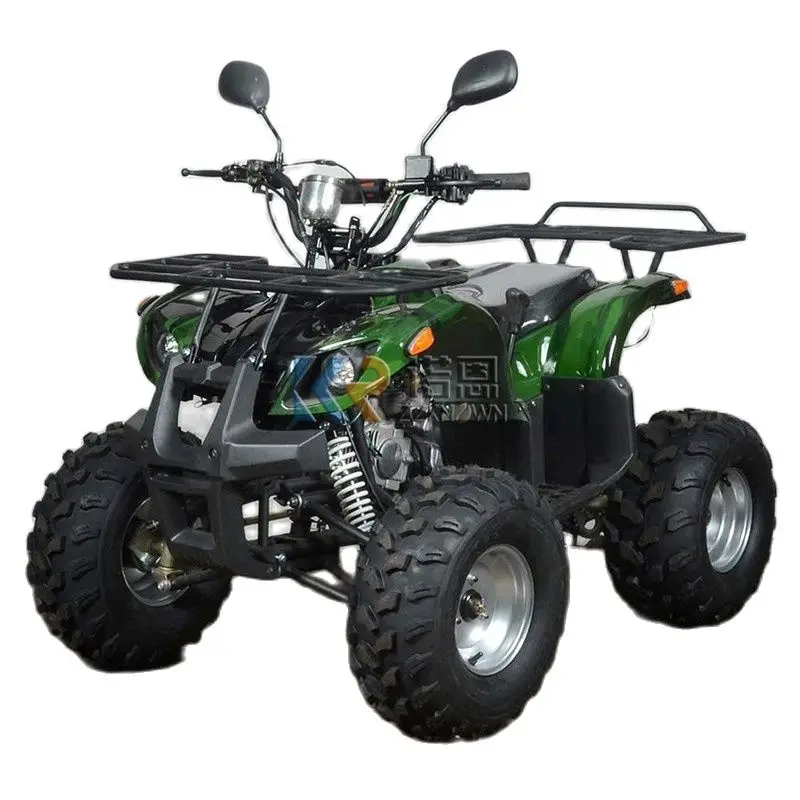BUILD
BUILD
Prior Model Year Shown
Important Safety Information: Recommended for riders 16 years of age and older. Honda recommends that all ATV riders take a training course and read their owner’s manual thoroughly. The 2022 Recon is not available for sale in California.
Download Brochure
Loading
BASE MSRP $4,499
BUILD DETAILS
BASE MSRP $4,749
BUILD DETAILS
Compact and lighter-weight, the Recon's semi-dry-sump and overhead valve designs create an engine that's not only shorter from top to bottom, but one that enhances handling by lowering the center of gravity while also allowing for better ground clearance.
By orienting the crankshaft front to back in the chassis in our ATV and side-by-side engines, we route the flow of power straight to the wheels without any unnecessary right-angle detours, reducing powertrain friction and putting more grunt to the ground.
Shifting between gears should always be this easy. With Honda's available unique ESP system (ES models only), upshifting and downshifting is as simple and fast as pushing one of two handlebar-mounted buttons. ESP is also a bonus when riding in heavy or mud/snow-covered boots.
Prior Model Year Shown
Clean, efficient, proven, low-maintenance. Shaft drive is the perfect choice for a machine like this, and for riders who pile on the miles. You never have to worry about lubrication or adjustment out on the trail.
You never have to worry about lubrication or adjustment out on the trail.
Loading
Below, you’ll find a list of the entire 2017 Honda ATV / Four-Wheeler model lineup including all 4×4 models and 2×4 models ranging from the smallest 90cc TRX up to the largest engine Honda crams into an ATV for 2017 which is the 700-class machine Rincon 680.
Honda ATV Model Key:
Confused by Honda’s multitude of ATV models? Check out a few of the links directly below for breakdowns of each individual model and all of the variations available etc.
Misc Honda ATV Blog Posts / Links:
2017 Honda 2×4 ATV Model Lineup:
2017 Honda Rancher 4×4 ATV Model Lineup Options:
2017 Honda Rincon 680 4×4 | TRX680FA Price / MSRP: TBA
Signup for Honda PowerSports News / Model Updates!
Many beginners and even experienced ATVs often ignore one important issue - the quality and brand of fuel. But the operation of many systems depends on gasoline: a carburetor, an engine, cooling, etc. Therefore, before buying a quadric, it is important to figure out which gasoline is better to fill in it.
But the operation of many systems depends on gasoline: a carburetor, an engine, cooling, etc. Therefore, before buying a quadric, it is important to figure out which gasoline is better to fill in it.
Each ATV has its own technical features, so gasoline is selected individually for each vehicle. This means that if a quadric running on the A-92 pour in good 95 fuel, his systems will begin to fail, and a whole series of problems will appear.
The use of unsuitable gasoline often results in:
 Due to poor combustion of fuel, a dark coating appears on the components of the quadric (candles, cylinder, etc.). This leads to a decrease in dynamics and a drop in the power of equipment.
Due to poor combustion of fuel, a dark coating appears on the components of the quadric (candles, cylinder, etc.). This leads to a decrease in dynamics and a drop in the power of equipment. As you can see, low-quality or unsuitable gasoline will not only increase the wear of the quadric, but also reduce its functionality. For example, the ATV will start to stall when driving up hills or will not be able to get out of the mud.
Finding the right fuel grade for your ATV is easy. To do this, the rider just needs to study the documentation for the technique. The manufacturer usually specifies the best fuel and oil to use for a particular ATV model. Also, information about the brand of gasoline can sometimes be found on the gas tank cap.
But what about the owners of old vehicles or used ATVs for which there is no documentation? In this case, the rider should study the experience of the owners of similar equipment. To do this, you should visit the thematic forum or find the relevant documentation on the net.
To do this, you should visit the thematic forum or find the relevant documentation on the net.
Although it is possible to choose fuel by experimental method. Simply put, a motorist will have to pour gasoline with different octane numbers into the ATV and monitor the behavior of the equipment. It is recommended to start with A-95, then move on to A-92 and A-98. It is worth noting that most vehicle owners drive exactly 95 gasoline.
But if you select fuel using the “poke” method, then be sure to monitor the behavior of the equipment. If you notice that the speed of the quadric has dropped, the traction has deteriorated, the engine has begun to stall or overheat, immediately drain this gasoline.
Important: If you do not know what kind of gasoline to fill in an ATV, pay attention to the brand of the equipment itself. Most Chinese devices work on A-92, but it is better to pour A-95 into Canadian or American quadrics.
Sometimes even the use of fuel with the correct octane rating does not guarantee the correct operation of the motorcycle. And it's all about the low quality of the gasoline itself. Usually this situation occurs when you refuel in an unverified place or buy fuel "from hand".
And it's all about the low quality of the gasoline itself. Usually this situation occurs when you refuel in an unverified place or buy fuel "from hand".
Filling with low-quality gasoline, you will notice that:
Determining the quality of fuel when refueling is difficult, but there are a few life hacks. First, run your finger along the inside of the "gun". It should not have any deposits and fat. Such symptoms indicate third-party products that make up gasoline. It is because of them that soot usually appears, and blockages form in different systems.
Also note the smell of the fuel itself. It should not give off acetone, alcohol, sulfur or other additives.
When deciding what kind of gasoline to put in an ATV, many riders start using a variety of additives and octane correctors. This is done to improve the quality of fuel, increase the power of equipment or reduce gasoline consumption. However, all additives adversely affect the engine and fuel system of the vehicle.
This is done to improve the quality of fuel, increase the power of equipment or reduce gasoline consumption. However, all additives adversely affect the engine and fuel system of the vehicle.
01/28/2021 7065
Articles
02 Dec
Any wheeled vehicle - from a bicycle to a multi-ton truck - has a transmission in its device: a system that transmits rotation from the engine to the wheels. The operation of the transmission - and therefore the speed of driving - can be controlled by shifting gears.
Gear shifting is organized differently in each mode of transport. In the article below, we will tell you exactly how to shift gears on ATVs, and what gearboxes are found on such equipment.
Gearboxes for ATVs can be of two types:
 Similar to motorcycle gearboxes. They are put mainly on racing models, but in recent years they have also begun to be found on utility ATVs. They have a foot clutch or clutch with a lever on the steering wheel (in most cases it is), and a foot shifter. Manual transmission usually has 4 “forward” gears, neutral and reverse.
Similar to motorcycle gearboxes. They are put mainly on racing models, but in recent years they have also begun to be found on utility ATVs. They have a foot clutch or clutch with a lever on the steering wheel (in most cases it is), and a foot shifter. Manual transmission usually has 4 “forward” gears, neutral and reverse. Rare and mostly found in older models, but other variations can be found. For example - "automatic" with the ability to manually shift gears.
Manual ATVs are a little more difficult to drive (at least at first, until you get used to it), but you can more accurately select the appropriate mode. And vice versa: CVT "boxes" are much easier to operate, they are easy to master for a beginner who gets behind the wheel of an ATV for the first time. But on the other hand, with active driving along a route with variable difficulty, riding a CVT will be a little less convenient.
But on the other hand, with active driving along a route with variable difficulty, riding a CVT will be a little less convenient.
For example: you are driving on a flat packed dirt road on H and you see a large stretch of muddy road ahead with deep mud (or a steep hill, or bumps, or stones). You will have to come to a complete stop and shift to L, drive through mud, and when you get back on a dry road, come to a complete stop again and shift back to H. , like motorcycles, and a manual clutch lever on the handlebar on the left.
The foot lever device can be of two types:
The shift itself is carried out in the same way as on motorcycles:

